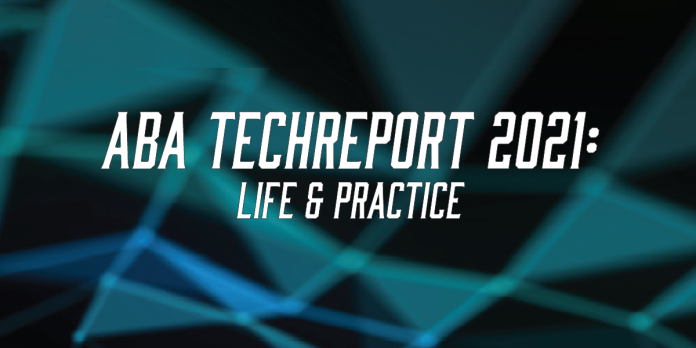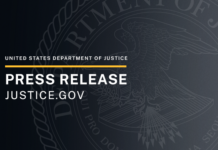
For years, lawyers have strived to find the perfect “work-life” balance, only to have the proverbial boulder roll back down the hill. And just like Sisyphus, they would roll the boulder back up, only to realize it will never reach the top. Impediments such as increased office hours to compensate for greater overhead, longer commutes to work, hesitancy to adapt to emerging technologies, and, most recently, dealing with the COVID-19 pandemic, have caused lawyers to consider more seriously how to achieve a better “work-life” balance.
In 2019, the American Bar Association added a “Life & Practice” volume to its Legal Technology Survey Report. Since that time, the COVID-19 pandemic has entered our lives, and the 2021 Legal Technology Survey Report “Life and Practice” survey results indicate that there are still a fair number of attorneys who are struggling to achieve an appropriate “work-life” balance. Hopefully, an understanding of the 2021 Survey and the demographics and overall results will offer attorneys insight as to whether they are in an optimal environment for personal, emotional, and professional satisfaction.
Demographics
447 attorneys in private practice completed the Life & Practice questionnaires. The respondents were broken down as follows:
- 8% sole practitioners
- 31% at firms of 2-9 attorneys
- 20 at firms of 10-49 attorneys
- 9% at firms of 50-99 attorneys
- 16% at firms of 100-499 attorneys
- 16% at firms of 500+ attorneys
The average age of all respondents was 58 years old. On average, respondents have been admitted to the bar for 28 years. Approximately 91% of respondents engaged in some form of transactional fee structure (hourly, fixed fee), while 9% used a contingent fee structure.
On average, respondents have been admitted to the bar for 28 years.
Work Location
As the 2021 Survey was being conducted just as the COVID-19 pandemic was nearing its apex, the results regarding an attorneys’ use of traditional office space had not been fully investigated. 80% of the respondents indicated that they worked in a traditional office space owned/leased exclusively by their firm, up from 69% in 2019. 6% of the respondents indicated that they worked in a home office, down from 14% in 2019. 2% indicated that they worked remotely, while 0% indicated that they did so in 2019.
Of all respondents who indicated that they were solo practitioners, 49% indicated that they exclusively owned or leased their space, as compared to 34% in 2019, 81% of attorneys in offices of 2-9 attorneys owned or leased their space as compared to 71% in 2019, and 90 attorneys in offices of 10-49 attorneys owned or leased their space, as compared to 85% in 2019.
Based on the responses, it is interesting to note that almost 50% of the respondents who worked in a traditional office space leased/owned exclusively by the law firm did not return to that setting. Of course, that begs the question of “…what is occupying the space owned/leased by the firm?” Are these lawyers appreciating the value of technology more? Have lawyers recognized the value of telecommuting/practicing remotely? The answer may be “yes,” but it does not appear to be an overwhelming “yes.” Respondents in law firms numbering 10 to 100+ attorneys answered that they telecommuted more in 2021, but not in 2017 or 2018.
In all, 64% of the respondents, or approximately 282 lawyers, indicated that they did not telecommute. 73% of these respondents reported that they have no interest in telecommuting or felt that it was not necessary. 8% reported that telecommuting is prohibited by office policy, a 3% reported that they lacked the necessary technology.
In a “value-driven” sector such as practicing law, it is important to understand the word “value” greater than the price of serviced performed. Lawyers and law firms own or lease office space which costs money. The numbers indicate that this space is not used 100% of the time. With continuing advances in technology, coupled with new and emerging products for cloud-based legal practice, a brick-and-mortar dwelling makes little to no financial sense. These are cost savings a lawyer can pass on to their client. Further, the luxury of not having to commute both to and from an office offers the lawyer benefits too numerous to mention in this report.
Smartphones and Security
These are the days where a lawyer can hold their entire practice in the palm of their hand. The advent of sophisticated case management software has allowed lawyers to conduct their practice, from client intake to even presenting trial exhibits in the courtroom. Despite this, 2% of respondents indicated that they do not own a smartphone. There was no follow-up question as to why practitioners did not own a smartphone, but it is a question certainly worth examining. The iPhone led the way by way of use, with a 4-1 margin over the Android.
In reviewing the 2021 Survey, it was encouraging to note that 99% of smartphone users used some form of security to protect their phone, up from 97% in 2019. 97% used password protection, up from 95% in 2019. 45% used some form of biometric or smartcard identification, up from 33% in 2019.
Smartphone technology is a huge value-added commodity for your law practice. These days, attorneys can practically run and manage your practice in the palm of one’s hand. However, if that phone ends up in the palm of someone else’s hand, attorneys may be exposed to serious liability. It is imperative to understand and use the features of smartphones phone to protect one’s data. The first and most obvious is to set a strong passcode. Second, for iPhone users, is to turn on Find My iPhone. For Android users, there is Find My Device or mobitracker.org for starters. Many smartphones have biometric (touch) identification, and some supported models now have facial recognition. If attorneys have sensitive information on their smartphones, it is imperative to become familiar with the safeguards that the device has for one to put in place.
Professional Conferences/Education
I always say it is called “the practice of law” because lawyers are always striving to perfect their craft. There is always a new law, rule, regulation, or piece of equipment or software that could enhance an attorney’s individual practice. In 2012, the American Bar Association updated Comment 8 of Model Rule 1.1, dictating that a lawyer “…should keep abreast of the changes in the law and its practice, including the benefits and risks associated with relevant technology.” I mention this update because jurisdictions are starting to make it a mandatory requirement that an attorney attend a technology CLE.
67% of respondents indicated that they were interested in traveling for professional conferences. 14% were not interested, and 18% were indifferent. Managing partners are most likely to be interested in traveling for professional conferences, followed by partners, then associates, then solo practitioners. Conversely, of the 53% of attorneys who stated they would be interested in attending a virtual conference, 77% of the respondents were solo practitioners, 56% in firms between 2-9 attorneys, 51% in firms of 10-49 attorneys, and 46% in firms of 100+.
Why is it that managing partners or partners in larger firms are interested in traveling for a conference, while solo practitioners or those working in a small firm would prefer to attend virtual conferences? Workload and travel costs were the two main obstacles to attending professional conferences. Other obstacles given were time away from family, registration cost, and work/life balance.
Impact of the COVID-19 Pandemic
It is an understatement to say that the COVID-19 pandemic has had a dramatic impact on the way lawyers practice. Many attorneys were forced to alter their entire practice. Some had to work from home for the first time. The term “virtual practice,” which may have been a foreign language to some, had now become the norm and not the exception. “Zoom” became a verb and not just a noun.
Respondents were asked how much more they were forced to increase working remotely because of the pandemic. 37% of respondents reported working remotely 100% more. 22% reported 75% more, 9% reported 50% more, 14% reported 25% more, and 18% reported 0% more. The average percentage increase among all respondents is 61%. Respondents from firms of 100+ attorneys report working remotely an average of 76% more, followed by 61% more among respondents from firms of 10-49, 57% more among solo firms, and 48% more among respondents from firms of 2-9 attorneys.
Of course, use and reliance on technology was an important factor in maintaining a satisfactory “work-life” balance as COVID entered our lives. The word “technology” was meant to indicate both hardware and software. With respect to technology that solos, associates, or partners already had in their practices, 27% of the respondents reported they used the technology they already own 0% more, 25% reported 25% more, 18% reported 50% more, 17% reported 75% more, and 13% reported they use the technology they already own 100% more. On average, respondents use the technology they already own 42% more because of the pandemic, including 45% more from firms of 100+ attorneys, 40% more among solo attorneys, 39% more from firms of 10-49 attorneys, and 36% more from firms of 2-9 attorneys.
Overall, respondents indicated that they were forced to use new technology 36% more because of the pandemic. There was a relatively even split among the respondents’ demographics; 40% of these respondents were from firms comprising of 100+ attorneys, 33% more among solo attorneys and firms of 2-9 attorneys, and 31% more among firms of 10-49 attorneys.
The 2021 Survey results further indicated that the amount of increased spending made on technology due to the COVID-19 pandemic was $1,451. Solo attorneys led the spending with an average of $1,902 spent on technology post-COVID, with firms comprising of 2-9 attorneys spending an average of $1,900. Lawyers in firms of 100+ attorneys spent an average of $757. However, 40% of the respondents in firms of 100+ attorneys reported that they did not know how much additional spending was made on technology post-COVID. This is fair enough, as associates in large law firms are usually not decision-makers in budgetary issues such as spending on technology.
While this survey was conducted as COVID-19 was spreading throughout the country, it certainly could not have anticipated the Delta or Omicron variants. However, the results showed that 7% of attorneys indicated that they would go back to the “old way” of doing things. 14% of the respondents indicated that they would stick with their new changes, and 74% stated answered that they would implement both a combination of their “old ways” and “new changes.” Of this sample size, 35% of the respondents who stated that they would stick to the new changes were solo practitioners, 16% who responded were in firms of 2-9 attorneys, 13% were from firms of 100+ attorneys, and 4% were from firms of 10-29 attorneys. The majority of the respondents who stated that they would stick to the new changes were solo practitioners or lawyers from firms of 2-9 attorneys.
Conclusion
The COVID-19 pandemic has certainly altered attorneys’ work-life balance. The responses in the 2021 Survey indicate that lawyers have been forced to make changes in their practice, be it working remotely, adapting to new technology, or learning how to better utilize existing technologies they already had. 2021 has brought on even more changes–the original COVID-19 pandemic seemed to wane, perhaps allowing lawyers to return to a more normal routine. However, at the time of this writing, the Delta variant is bringing widespread concern across the country. Will the 7% of attorneys who stated that they would return to the “old way” of doing things actually return to their “old” ways? Will lawyers implement even more changes to the way they practice in order to perform their practice seamlessly when another unforeseen event strikes? Will larger firms that required lawyers to return to their physical location allow them to telecommute as before? Will we see new technologies emerge to make remote practice even more efficient and effective? Certainly, a follow-up to the 2021 Survey will shed additional light on the shifting practices of lawyers post-COVID.
About the Author
Alan Klevan is the principal of The Law Offices of Alan J. Klevan, P.C. in Framingham, Massachusetts. He concentrates his practice in the fields of workers’ compensation law, automobile tort law, and general negligence law. He is also the owner of Summit Law Practice Solutions, a legal consulting firm focused on assisting solo practitioners and small law firms leverage their skills with emerging and existing technologies in order to maximize efficiency and profitability.
In August of 2009, the American Bar Association’s General Practice, Solo and Small Firm Division awarded Alan its “Solo and Small Firm Trainer of the Year Award” for his contribution to educating lawyers and law students about the opportunities of solo and small firm practice. Presently, Alan serves on the American Bar Association’s Legal Technology Resource Center.
You may find Alan in cyberspace at www.summitlps.com, www.klevanlawfirm.com, www.linkedin.com/in/alanklevan, or www.twitter.com/AlanKlevan.



